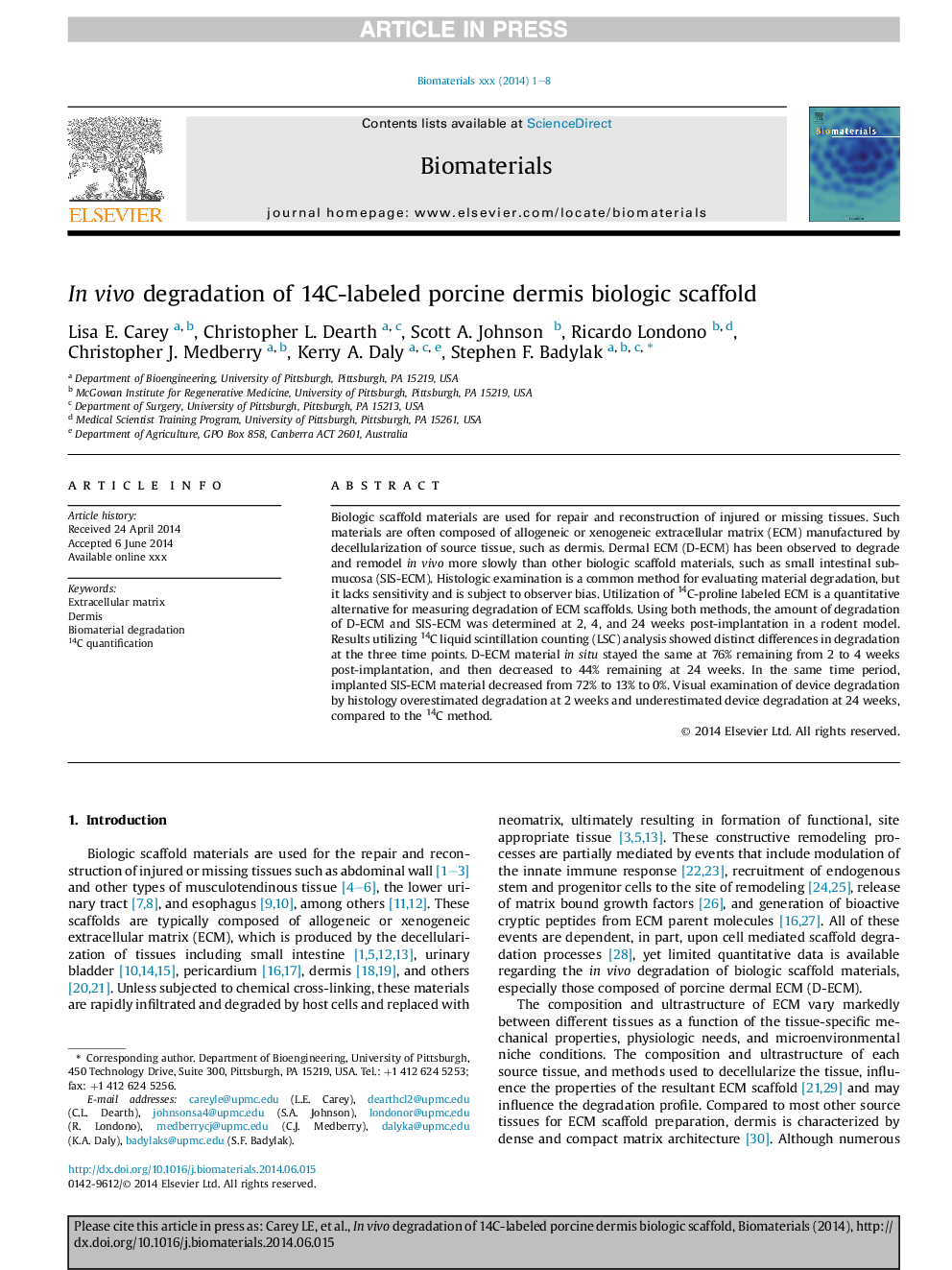| کد مقاله | کد نشریه | سال انتشار | مقاله انگلیسی | نسخه تمام متن |
|---|---|---|---|---|
| 10227289 | 436 | 2014 | 8 صفحه PDF | دانلود رایگان |
عنوان انگلیسی مقاله ISI
In vivo degradation of 14C-labeled porcine dermis biologic scaffold
دانلود مقاله + سفارش ترجمه
دانلود مقاله ISI انگلیسی
رایگان برای ایرانیان
موضوعات مرتبط
مهندسی و علوم پایه
مهندسی شیمی
بیو مهندسی (مهندسی زیستی)
پیش نمایش صفحه اول مقاله

چکیده انگلیسی
Biologic scaffold materials are used for repair and reconstruction of injured or missing tissues. Such materials are often composed of allogeneic or xenogeneic extracellular matrix (ECM) manufactured by decellularization of source tissue, such as dermis. Dermal ECM (D-ECM) has been observed to degrade and remodel in vivo more slowly than other biologic scaffold materials, such as small intestinal submucosa (SIS-ECM). Histologic examination is a common method for evaluating material degradation, but it lacks sensitivity and is subject to observer bias. Utilization of 14C-proline labeled ECM is a quantitative alternative for measuring degradation of ECM scaffolds. Using both methods, the amount of degradation of D-ECM and SIS-ECM was determined at 2, 4, and 24 weeks post-implantation in a rodent model. Results utilizing 14C liquid scintillation counting (LSC) analysis showed distinct differences in degradation at the three time points. D-ECM material in situ stayed the same at 76% remaining from 2 to 4 weeks post-implantation, and then decreased to 44% remaining at 24 weeks. In the same time period, implanted SIS-ECM material decreased from 72% to 13% to 0%. Visual examination of device degradation by histology overestimated degradation at 2 weeks and underestimated device degradation at 24 weeks, compared to the 14C method.
ناشر
Database: Elsevier - ScienceDirect (ساینس دایرکت)
Journal: Biomaterials - Volume 35, Issue 29, September 2014, Pages 8297-8304
Journal: Biomaterials - Volume 35, Issue 29, September 2014, Pages 8297-8304
نویسندگان
Lisa E. Carey, Christopher L. Dearth, Scott A. Johnson, Ricardo Londono, Christopher J. Medberry, Kerry A. Daly, Stephen F. Badylak,